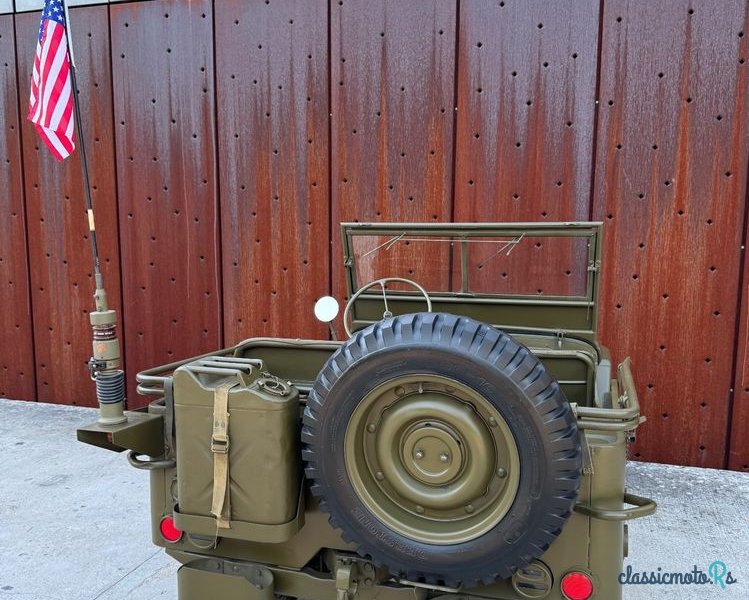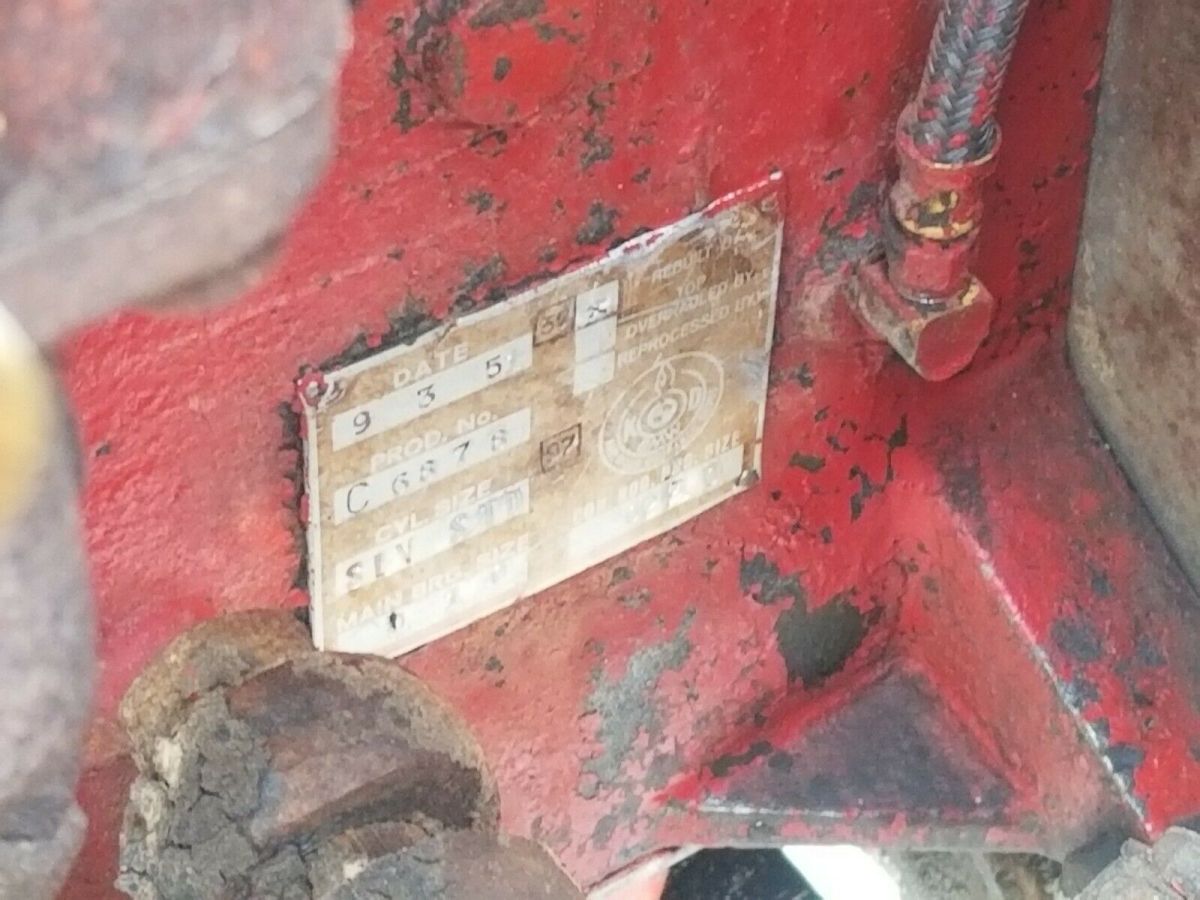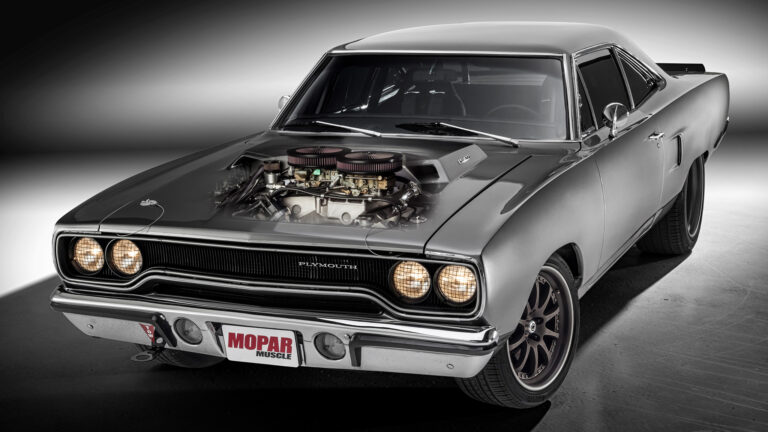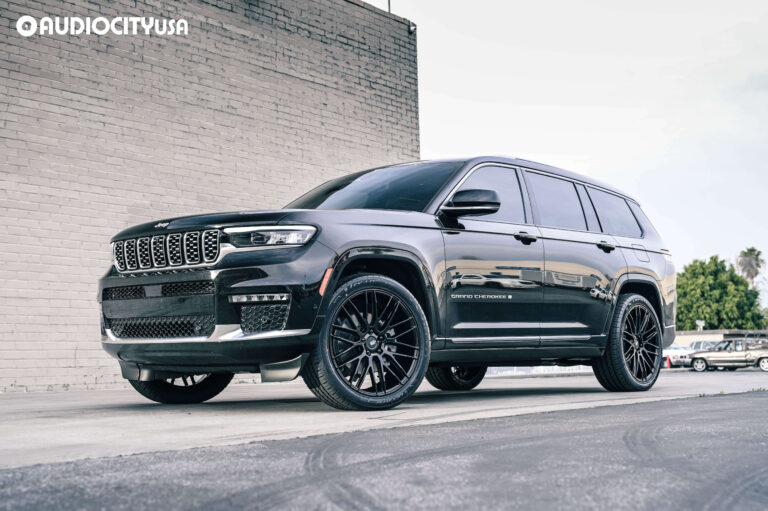1944 Jeep Willys For Sale: Own a Piece of Living History
1944 Jeep Willys For Sale: Own a Piece of Living History jeeps.truckstrend.com
The year 1944 stands as a pivotal moment in global history, and from the battlefields of World War II emerged an unassuming yet iconic vehicle that would forever change the landscape of transportation: the Willys MB Jeep. More than just a utility vehicle, the 1944 Willys Jeep became a symbol of American ingenuity, resilience, and the relentless drive for victory. Today, searching for a "1944 Jeep Willys For Sale" isn’t merely about acquiring an old vehicle; it’s about investing in a tangible piece of history, a rolling testament to the Greatest Generation, and an enduring legend that continues to captivate enthusiasts worldwide.
This article serves as a comprehensive guide for anyone considering the unique journey of purchasing a 1944 Willys Jeep. We will delve into its enduring legacy, what crucial aspects to scrutinize during your search, where to find these automotive treasures, practical tips for a successful acquisition, and the realities of owning and maintaining such a significant classic.
1944 Jeep Willys For Sale: Own a Piece of Living History
The Enduring Legacy: Why a 1944 Willys Jeep?
The 1944 Willys MB (and its Ford-produced counterpart, the GPW) was the quintessential military vehicle of World War II. Designed to be lightweight, rugged, and highly versatile, it performed countless roles, from troop transport and reconnaissance to ambulance duty and even as a makeshift power generator. General Dwight D. Eisenhower famously declared it one of "three decisive weapons" the U.S. had during the war.
Owning a 1944 Willys Jeep offers a unique connection to this powerful history. Each dent, every faded star, and the distinct rumble of its "Go-Devil" engine tells a story of perseverance and purpose. For collectors, it’s not just a vehicle; it’s a mobile museum exhibit, a conversation starter, and a focal point for historical reenactments and displays. Beyond its historical significance, the Jeep’s simple, mechanical design makes it relatively accessible for maintenance and repair for those with basic mechanical skills, ensuring its longevity for generations to come. Its timeless appeal lies in its unpretentious functionality and undeniable charm, making it a highly sought-after classic in the collector car market.
What to Look For: Key Considerations When Buying a 1944 Willys Jeep
Acquiring a vintage military vehicle like a 1944 Willys Jeep requires careful consideration and a keen eye. Authenticity, condition, and documentation are paramount.
Authenticity and Originality
The first question to ask is: how original is it? Many Jeeps have undergone various levels of restoration, modification, or even been pieced together from multiple vehicles over the decades.
- Willys MB vs. Ford GPW: While nearly identical visually, true enthusiasts often prefer one over the other for historical accuracy or specific details. Check frame numbers, engine block casting numbers, and body tub stampings for originality.
- Period Correctness: Look for original components like the "Go-Devil" L-head engine, T-84 transmission, Spicer 18 transfer case, and correct axles (Dana 25 front, Dana 27 rear). Even small details like headlight buckets, original gauges, and correct military markings (unit designations, star, tire pressure stencils) add significant value and authenticity.
- Matching Numbers (less common for Jeeps): Unlike classic cars where engine and chassis numbers often match, military Jeeps were produced in such volume that exact "matching numbers" as seen in sports cars are less common or strictly enforced. Focus more on period-correct components.

Condition Assessment

A thorough inspection is crucial. If you’re not mechanically inclined, hire a specialist in vintage military vehicles to perform a pre-purchase inspection.
- Engine and Drivetrain: Does the 4-cylinder "Go-Devil" engine run smoothly? Listen for knocks, excessive smoke, or unusual noises. Check for oil leaks. Test the transmission (3-speed manual) and transfer case (2-speed, 2WD/4WD) through all gears and ranges. Ensure the 4×4 system engages properly.
- Frame and Body: This is critical. Inspect the frame for cracks, bends, or extensive rust. The body tub is prone to rust, especially in the floorboards, toolboxes, and hat channels. Look for signs of shoddy patch repairs or excessive bondo.
- Electrical System: Most 1944 Jeeps were 6-volt systems. Some have been converted to 12-volt for easier starting and modern accessory compatibility. Understand which system is present and its condition. Check all lights, gauges, and wiring for corrosion or damage.
- Brakes and Steering: Test the non-power drum brakes for effectiveness and pull. Check for excessive play in the steering column and linkage.
- Tires: Period-correct military non-directional tires (NDTs) enhance authenticity but can be expensive. Check their condition regardless.
- Fuel System: Inspect the fuel tank, lines, and pump for leaks or contamination.

Documentation
A clear title is essential. Look for any historical documentation, maintenance records, or previous ownership history. These can significantly add to the vehicle’s provenance and value. A bill of sale is always required.
Where to Find Them: Navigating the Market
Finding a 1944 Willys Jeep requires patience and knowing where to look.
- Online Marketplaces: Websites like eBay, Hemmings Motor News, ClassicCars.com, and specific military vehicle classifieds (e.g., G503.com forums) are prime hunting grounds.
- Classic Car Dealerships: Some specialized dealerships focus on vintage and military vehicles. They often offer restored examples at a premium but provide a level of vetting.
- Auctions: Major auction houses (Mecum, Barrett-Jackson) occasionally feature high-quality examples. Local estate or military surplus auctions can sometimes yield unexpected finds, often in "as-is" condition.
- Specialized Military Vehicle Clubs and Forums: Joining clubs like the Military Vehicle Preservation Association (MVPA) or regional groups is invaluable. Members often sell vehicles within the community, and you can gain expert advice.
- Word-of-Mouth: Networking with other enthusiasts can lead to private sales not advertised elsewhere.
The Buying Process: Tips for a Successful Purchase
Once you’ve identified a potential candidate, follow these steps for a smooth acquisition.
- Set a Realistic Budget: Factor in not just the purchase price but also potential restoration costs, transportation, insurance, and ongoing maintenance.
- Research Thoroughly: Learn as much as you can about the specific model year, common issues, and market values for different conditions.
- Arrange a Pre-Purchase Inspection (PPI): This is paramount. A qualified mechanic specializing in vintage military vehicles can identify hidden problems that could save you thousands down the line. If buying remotely, arrange for a trusted third-party inspector.
- Ask Detailed Questions: Don’t hesitate to ask the seller about the vehicle’s history, any known issues, recent maintenance, and why they are selling. Request additional photos or videos if you can’t inspect in person.
- Negotiate Effectively: Based on your inspection findings and market research, be prepared to negotiate the price.
- Understand Shipping Logistics: If buying from out of state, arrange for a reputable enclosed vehicle transport service to protect your investment.
- Secure Proper Insurance: Standard auto insurance may not cover a vintage military vehicle adequately. Look into specialized classic car insurance providers that understand the unique value and usage of such vehicles.
Ownership & Maintenance: Life with a Vintage Willys
Owning a 1944 Willys Jeep is a rewarding experience, but it comes with its own set of responsibilities.
- Common Maintenance: These vehicles are mechanically simple. Regular oil changes, lubrication of chassis points, checking fluid levels, and inspecting brakes are standard. Learn basic troubleshooting for the carburetor, ignition system, and electrical components.
- Sourcing Parts: While not as common as modern car parts, a robust aftermarket exists for Willys Jeeps. Specialized vendors (e.g., Omix-ADA, Kaiser Willys, Walck’s 4WD) offer new reproduction parts, New Old Stock (NOS) parts, and used components. Military vehicle swap meets are also excellent resources.
- Driving Characteristics: Be aware that a 1944 Willys Jeep drives very differently from modern vehicles. Expect manual steering, manual drum brakes (requiring more stopping distance), and a top speed around 45-50 mph. It’s not designed for highway cruising. Embrace the open-air, rugged experience.
- Community Involvement: Join local or national military vehicle clubs. These communities are invaluable for advice, technical support, parts sourcing, and simply sharing your passion with like-minded individuals. Attending military vehicle shows and reenactments is a fantastic way to enjoy your Jeep.
- Restoration vs. Preservation: Decide if you want a fully restored, concourse-level vehicle or a well-preserved "driver" that shows its age and history. Both have their merits, but restoration can be a multi-year, expensive endeavor.
1944 Jeep Willys For Sale: Estimated Price Guide
The price of a 1944 Willys Jeep varies significantly based on its condition, originality, and historical provenance.
| Condition Category | Estimated Price Range (USD) | Key Characteristics & Considerations |
| :—————– | :————————– | :———————————————————————————————————————————————————————————————————————————————————————————————————————————————————————————————————————————————————————————————————————————————————————————————————————————————————————————————————————————————————————————————————————————————————————————————————————————————————————————————————————————————————————————————————————————————————————————————————————————————————————————————————————————————————————————————————————————————————————————————————————————————————————————————————————————————————————————————————————————————————————————————————————————————————————————————————————————————————————————————————————————————————————————————————————————————————————————————————————————————————————————————————————————————————————————————————————————————————————————————————————————————————————————————————————————————————————————————————————————————————————————————————————————————————————————————————————————————————————————————————————————————————————————————————————————————————————————————————————————————————————————————————————————————————————————————————————————————————————————————————————————————————————————————————————————————————————————————————————————————————————————————————————————————————————————————————————————————————————————————————————————————————————————————————————————————————————————————————————————————————————————————————————————————————————————————————————————————————————————————————————————————————————————————————————————————————————————————————————————————————————————————————————————————————————————————————————————————————————————————————————————————————————————————————————————————————————————————————————————————————————————————————————————————————————————————————————————————————————————————————————————————————————————————————————————————————————————————————————————————————————————————————————————————————————————————————————————————————————————————————————————————————————————————————————————————————————————————————————————————————————————————————————————————————————————————————————————————————————————————————————————————————————————————————————————————————————————————————————————————————————————————————————————————————————————————————————————————————————————————————————————————————————————————————————————————————————————————————————————————————————————————————————————————————————————————————————————————————————————————————————————————————————————————————————————————————————————————————————————————————————————————————————————————————————————————————————————————————————————————————————————————————————————————————————————————————————————————————————————————————————————————————————————————————————————————————————————————————————————————————————————————————————————————————————————————————————————————————————————————————————————————————————————————————————————————————————————————————————————————————————————————————————————————————————————————————————————————————————————————————————————————————————————————————————————————————————————————————————————————————————————————————————————————————————————————————————————————————————————————————————————————————————————————————————————————————————————————————————————————————————————————————————————————————————————————————————————————————————————————————————————————————————————————————————————————————————————————————————————————————————————————————————————————————————————————————————————————————————————————————————————————————————————————————————————————————————————————————————————————————————————————————————————————————————————————————————————————————————————————————————————————————————————————————————————————————————————————————————————————————————————————————————————————————————————————————————————————————————————————————————————————————————————————————————————————————————————————————————————————————————————————————————————————————————————————————————————————————————————————————————————————————————————————————————————————————————————————————————————————————————————————————————————————————————————————————————————————————————————————————————————————————————————————————————————————————————————————————————————————————————————————————————————————————————————————————————————————————————————————————————————————————————————————————————————————————————————————————————————————————————————————————————————————————————————————————————————————————————————————————————————————————————————————————————————————————————————————————————————————————————————————————————————————————————————————————————————————————————————————————————————————————————————————————————————————————————————————————————————————————————————————————————————————————————————————————————————————————————————————————————————————————————————————————————————————————————————————————————————————————————————————————————————————————————————————————————————————————————————————————————————————————————————————————————————————————————————————————————————————————————————————————————————————————————————————————————————————————————————————————————————————————————————————————————————————————————————————————————————————————————————————————————————————————————————————————————————————————————————————————————————————————————————————————————————————————————————————————————————————————————————————————————————————————————————————————————————————————————————————————————————————————————————————————————————————————————————————————————————————————————————————————————————————————————————————————————————————————————————————————————————————————————————————————————————————————————————————————————————————————————————————————————————————————————————————————————————————————————————————————————————————————————————————————————————————————————————————————————————————————————————————————————————————————————————————————————————————————————————————————————————————————————————————————————————————————————————————————————————————————————————————————————————————————————————————————————————————————————————————————————————————————————————————————————————————————————————————————————————————————————————————————————————————————————————————————————————————————————————————————————————————————————————————————————————————————————————————————————————————————————————————————————————————————————————————————————————————————————————————————————————————————————————————————————————————————————————————————————————————————————————————————————————————————————————————————————————————————————————————————————————————————————————————————————————————————————————————————————————————————————————————————————————————————————————————————————————————————————————————————————————————————————————————————————————————————————————————————————————————————————————————————————————————————————————————————————————————————————————————————————————————————————————————————————————————————————————————————————————————————————————————————————————————————————————————————————————————————————————————————————————————————————————————————————————————————————————————————————————————————————————————————————————————————————————————————————————————————————————————————————————————————————————————————————————————————————————————————————————————————————————————————————————————————————————————————————————————————————————————————————————————————————————————————————————————————————————————————————————————————————————————————————————————————————————————————————————————————————————————————————————————————————————————————————————————————————————————————————————————————————————————————————————————————————————————————————————————————————————————————————————————————————————————————————————————————————————————————————————————————————————————————————————————————————————————————————————————————————————————————————————————————————————————————————————————————————————————————————————————————————————————————————————————————————————————————————————————————————————————————————————————————————————————————————————————————————————————————————————————————————————————————————————————————————————————————————————————————————————————————————————————————————————————————————————————————————————————————————————————————————————————————————————————————————————————————————————————————————————————————————————————————————————————————————————————————————————————————————————————————————————————————————————————————————————————————————————————————————————————————————————————————————————————————————————————————————————————————————————————————————————————————————————————————————————————————————————————————————————————————————————————————————————————————————————————————————————————————————————————————————————————————————————————————————————————————————————————————————————————————————————————————————————————————————————————————————————————————————————————————————————————————————————————————————————————————————————————————————————————————————————————————————————————————————————————————————————————————————————————————————————————————————————————————————————————————————————————————————————————————————————————————————————————————————————————————————————————————————————————————————————————————————————————————————————————————————————————————————————————————————————————————————————————————————————————————————————————————————————————————————————————————————————————————————————————————————————————————————————————————————————————————————————————————————————————————————————————————————————————————————————————————————————————————————————————————————————————————————————————————————————————————————————————————————————————————————————————————————————————————————————————————————————————————————————————————————————————————————————————————————————————————————————————————————————————————————————————————————————————————————————————————————————————————————————————————————————————————————————————————————————————————————————————————————————————————————————————————————————————————————————————————————————————————————————————————————————————————————————————————————————————————————————————————————————————————————————————————————————————————————————————————————————————————————————————————————————————————————————————————————————————————————————————————————————————————————————————————————————————————————————————————————————————————————————————————————————————————————————————————————————————————————————————————————————————————————————————————————————————————————————————————————————————————————————————————————————————————————————————————————————————————————————————————————————————————————————————————————————————————————————————————————————————————————————————————————————————————————————————————————————————————————————————————————————————————————————————————————————————————————————————————————————————————————————————————————————————————————————————————————————————————————————————————————————————————————————————————————————————————————————————————————————————————————————————————————————————————————————————————————————————————————————————————————————————————————————————————————————————————————————————————————————————————————————————————————————————————————————————————————————————————————————————————————————————————————————————————————————————————————————————————————————————————————————————————————————————————————————————————————————————————————————————————————————————————————————————————————————————————————————————————————————————————————————————————————————————————————————————————————————————————————————————————————————————————————————————————————————————————————————————————————————————————————————————————————————————————————————————————————————————————————————————————————————————————————————————————————————————————————————————————————————————————————————————————————————————————————————————————————————————————————————————————————————————————————————————————————————————————————————————————————————————————————————————————————————————————————————————————————————————————————————————————————————————————————————————————————————————————————————————————————————————————————————————————————————————————————————————————————————————————————————————————————————————————————————————————————————————————————————————————————————————————————————————————————————————————————————————————————————————————————————————————————————————————————————————————————————————————————————————————————————————————————————————————————————————————————————————————————————————————————————————————————————————————————————————————————————————————————————————————————————————————————————————————————————————————————————————————————————————————————————————————————————————————————————————————————————————————————————————————————————————————————————————————————————————————————————————————————————————————————————————————————————————————————————————————————————————————————————————————————————————————————————————————————————————————————————————————————————————————————————————————————————————————————————————————————————————————————————————————————————————————————————————————————————————————————————————————————————————————————————————————————————————————————————————————————————————————————————————————————————————————————————————————————————————————————————————————————————————————————————————————————————————————————————————————————————————————————————————————————————————————————————————————————————————————————————————————————————————————————————————————————————————————————————————————————————————————————————————————————————————————————————————————————————————————————————————————————————————————————————————————————————————————————————————————————————————————————————————————————————————————————————————————————————————————————————————————————————————————————————————————————————————————————————————————————————————————————————————————————————————————————————————————————————————————————————————————————————————————————————————————————————————————————————————————————————————————————————————————————————————————————————————————————————————————————————————————————————————————————————————————————————————————————————————————————————————————————————————————————————————————————————————————————————————————————————————————————————————————————————————————————————————————————————————————————————————————————————————————————————————————————————————————————————————————————————————————————————————————————————————————————————————————————————————————————————————————————————————————————————————————————————————————————————————————————————————————————————————————————————————————————————————————————————————————————————## 1944 Jeep Willys For Sale: A Glimpse into the Past, a Drive for the Future
In the annals of military and automotive history, few vehicles hold as revered a status as the Willys MB Jeep. More than just a utility vehicle, the 1944 Willys Jeep became an enduring symbol of Allied ingenuity, resilience, and the relentless drive for victory during World War II. Today, the phrase "1944 Jeep Willys For Sale" resonates deeply with collectors, history enthusiasts, and off-road adventurers alike. It’s an invitation to own a tangible piece of living history, a rolling testament to the "Greatest Generation," and an icon whose rugged simplicity continues to captivate enthusiasts worldwide. This comprehensive guide will navigate the fascinating world of acquiring a 1944 Willys Jeep, offering practical advice and insights for anyone considering this unique journey.
The Enduring Legacy: Why a 1944 Willys Jeep?
The 1944 Willys MB, along with its Ford-produced counterpart, the GPW, was the definitive military vehicle of its era. Born from a rapid-fire design competition in 1940, the Jeep proved itself indispensable across every theater of the war. Its lightweight, rugged construction, and astonishing versatility allowed it to perform countless roles: transporting troops, serving as reconnaissance vehicles, acting as mobile command posts, and even being adapted for ambulance duty or as a makeshift power generator. General George C. Marshall famously described the Jeep as "America’s greatest contribution to modern warfare," while General Dwight D. Eisenhower listed it among the "three decisive weapons" that helped the Allies win the war.
Owning a 1944 Willys Jeep offers an unparalleled connection to this powerful history. Each rivet, every faded star, and the distinct, purposeful rumble of its "Go-Devil" engine tells a story of perseverance and global impact. For collectors, it’s not merely a vehicle; it’s a mobile museum exhibit, a powerful conversation starter, and a focal point for historical reenactments, parades, and educational displays. Beyond its profound historical significance, the Jeep’s remarkably simple, mechanical design makes it surprisingly accessible for maintenance and repair for those with basic mechanical aptitude, ensuring its longevity for generations to come. Its timeless appeal lies in its unpretentious functionality, its unmistakable silhouette, and its undeniable charm, making it a highly sought-after classic in the collector car market.
What to Look For: Key Considerations When Buying a 1944 Willys Jeep
Acquiring a vintage military vehicle like a 1944 Willys Jeep demands meticulous attention and a discerning eye. Authenticity, overall condition, and comprehensive documentation are paramount to making a sound investment and ensuring a fulfilling ownership experience.
Authenticity and Originality
The first and most critical question to address is the vehicle’s level of originality. Decades of service, restoration efforts, and various modifications mean that few Jeeps remain in their exact factory-original state. Many have undergone extensive restorations, while others may be "parts Jeeps" assembled from various donor vehicles.
- Willys MB vs. Ford GPW: While visually nearly identical, subtle differences exist. True purists or those seeking historical accuracy often prefer one over the other. The key is to verify the manufacturer by checking the frame numbers, engine block casting numbers, and body tub stampings. Willys MBs have "MB" in their serial number, while Ford GPWs have "GPW."
- Period Correctness: Scrutinize for original and period-correct components. This includes the iconic "Go-Devil" L-head engine, the T-84 transmission, the Spicer 18 transfer case, and the correct Dana 25 front and Dana 27 rear axles. Even seemingly minor details, such as original gauges, headlight buckets, and authentic military markings (e.g., unit designations, the white star, tire pressure stencils), significantly contribute to a Jeep’s authenticity and value.
- "Matching Numbers": Unlike classic sports cars, where engine and chassis numbers often perfectly match, military Jeeps were mass-produced for wartime necessity. Exact "matching numbers" as strictly defined in other collector markets are less common or less critical for Jeeps. Focus more on the presence of period-correct components that align with the 1944 production year.
Condition Assessment
A thorough, hands-on inspection is non-negotiable. If you lack mechanical expertise, it is highly advisable to enlist the services of a specialist in vintage military vehicles to conduct a pre-purchase inspection (PPI).
- Engine and Drivetrain: Does the robust 4-cylinder "Go-Devil" engine start easily and run smoothly? Listen for any alarming knocks, excessive blue or black smoke, or unusual mechanical noises. Check for significant oil or fluid leaks. Test the 3-speed manual transmission and the 2-speed transfer case through all gears and ranges, ensuring the 4×4 system engages properly.
- Frame and Body: These are common areas for severe deterioration. Inspect the frame meticulously for any signs of cracks, bends, previous accident damage, or extensive rust. The body tub, particularly the floorboards, toolboxes, and hat channels (the structural supports underneath the body), are highly susceptible to rust. Be wary of signs of shoddy patch repairs, excessive body filler (bondo), or poorly executed welding.
- Electrical System: Most 1944 Jeeps were originally equipped with a 6-volt electrical system. Many have been converted to 12-volt for improved starting and compatibility with modern accessories. Understand which system is present and thoroughly assess its condition. Check all lights, gauges, and the wiring harness for corrosion, brittle insulation, or unprofessional modifications.
- Brakes and Steering: Test the non-power drum brakes for effectiveness, evenness, and any pulling to one side. Check for excessive play in the steering column and linkage, which can indicate worn components.
- Tires: Period-correct military non-directional tires (NDTs) significantly enhance a Jeep’s authentic appearance but can be costly. Regardless of type, check their overall condition, tread depth, and age.
- Fuel System: Inspect the fuel tank, fuel lines, and fuel pump for any signs of leaks, rust, or contamination.
Documentation
A clear, transferable title is absolutely essential for legal ownership. Beyond that, any historical documentation, such as original owner’s manuals, maintenance records, wartime service papers (if verifiable), or a detailed previous ownership history, can significantly add to the vehicle’s provenance, value, and appeal. Always ensure a proper bill of sale is executed.
Where to Find Them: Navigating the Market
Locating a well-preserved 1944 Willys Jeep often requires patience, persistence, and knowing the right avenues to explore.
- Online Marketplaces: Websites such as eBay, Hemmings Motor News, ClassicCars.com, and specialized military vehicle classifieds (e.g., the G503.com forums, a highly respected resource for military Jeep enthusiasts) are excellent starting points.
- Classic Car Dealerships: Certain specialized dealerships focus specifically on vintage and military vehicles. While they may offer fully restored examples at a premium price, they often provide a level of pre-vetting and sometimes warranties.
- Auctions: Major auction houses like Mecum and Barrett-Jackson occasionally feature high-quality, meticulously restored examples. Local estate sales or military surplus auctions can sometimes yield unexpected finds, though these are typically sold in "as-is" condition, often requiring significant restoration.
- Specialized Military Vehicle Clubs and Forums: Joining organizations such as the Military Vehicle Preservation Association (MVPA) or various regional military vehicle clubs is invaluable. Members often buy and sell vehicles within the community, and these forums are rich with expert advice and insights.
- Word-of-Mouth: Networking with other enthusiasts, attending military vehicle shows, and participating in club events can lead to private sales that are not advertised publicly.
The Buying Process: Tips for a Successful Purchase
Once you’ve identified a promising candidate, following a structured buying process will help ensure a smooth and satisfying acquisition.
- Set a Realistic Budget: Beyond the initial purchase price, factor in potential costs for immediate repairs, deferred maintenance, transportation, specialized insurance, and any desired future restoration work.
- Research Thoroughly: Dedicate time to learning as much as you can about the specific model year, common mechanical quirks, and current market values for Jeeps in various conditions. Knowledge is power in negotiation.
- Arrange a Pre-Purchase Inspection (PPI): This cannot be stressed enough. A qualified mechanic with experience in vintage military vehicles can identify hidden problems that could otherwise lead to significant expenses down the road. If buying remotely, invest in a trusted third-party inspector.
- Ask Detailed Questions: Engage the seller with a list of specific questions about the vehicle’s history, any known mechanical issues, recent maintenance, and their reason for selling. Request additional high-resolution photos or videos, especially of specific areas of concern, if an in-person inspection isn’t immediately possible.
- Negotiate Effectively: Armed with your inspection findings and market research, be prepared to negotiate the price. Be polite but firm, and justify your offer based on the vehicle’s condition.
- Understand Shipping Logistics: If purchasing from a distant location, arrange for a reputable enclosed vehicle transport service. This will protect your valuable acquisition from the elements and road debris during transit.
- Secure Proper Insurance: Standard auto insurance policies may not adequately cover a vintage military vehicle’s unique value and usage. Explore specialized classic car insurance providers who understand the nuances of insuring such historical assets.
Ownership & Maintenance: Life with a Vintage Willys
Owning a 1944 Willys Jeep is a uniquely rewarding experience, but it does come with its own set of responsibilities and characteristics.
- Common Maintenance: These vehicles are mechanically simple and robust. Regular preventative maintenance, including oil changes, chassis lubrication, checking all fluid levels, and inspecting the brake system, is crucial. Familiarize yourself with basic troubleshooting for the carburetor, ignition system, and the 6-volt electrical components.
- Sourcing Parts: While not as readily available as parts for modern vehicles, a surprisingly robust aftermarket and network of specialized vendors exist for Willys Jeeps. Companies like Kaiser Willys, Walck’s 4WD, and Omix-ADA offer new reproduction parts, New Old Stock (NOS) components, and quality used parts. Military vehicle swap meets and online forums are also excellent resources.
- Driving Characteristics: It’s vital to understand that a 1944 Willys Jeep drives dramatically differently from any modern vehicle. Expect heavy manual steering, non-power manual drum brakes (requiring ample stopping





